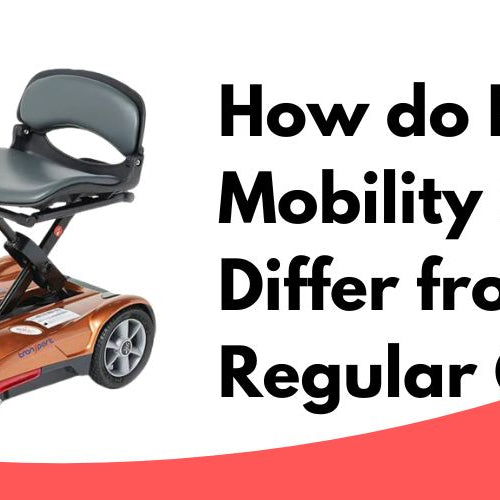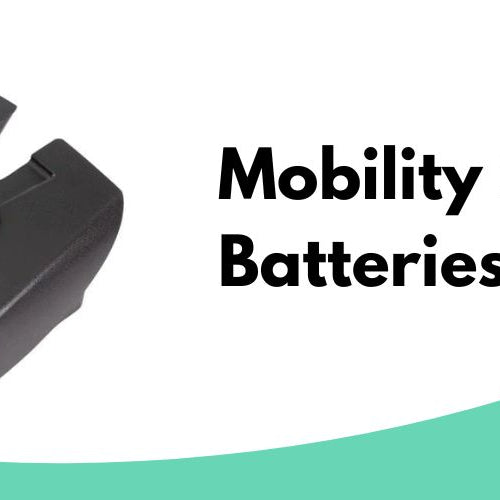Navigating hospitals can be challenging for individuals with limited mobility, raising the question of whether mobility scooters are allowed in such facilities. As hospitals strive to create accessible environments for all patients and visitors, understanding the rules and regulations surrounding the use of mobility scooters in hospitals is paramount.
Hospital policies regarding mobility scooter use may vary depending on the facility and local legislation. Generally, hospitals aim to accommodate people with mobility limitations by providing wheelchair access, designated spaces, and ramps. Many hospitals recognize that mobility scooters can significantly improve the quality of life for patients and visitors with mobility restrictions. Consequently, they permit the use of these devices as long as users adhere to specific guidelines, such as observing speed limits and using designated scooter parking areas. Before visiting a hospital, it is recommended to check with the facility for specific regulations and guidelines regarding mobility scooter use.
Are Mobility Scooters Allowed in Hospitals?
General Rules and Regulations
Mobility scooters are generally allowed in hospitals, but the rules and regulations surrounding their use may vary significantly depending on the specific institution. Some hospitals might provide designated parking spots for mobility scooters and allow them in most areas of the facility. Typically, they need to be driven at safe speeds, and users are expected to observe any posted guidelines or prohibitions in certain areas. This ensures the safety and accessibility for all hospital visitors and patients.
Exceptions and Special Cases
There are instances where a hospital may have stricter policies regarding mobility scooters, and in some cases, they might not be allowed at all. To use a mobility scooter in a hospital, you may need a doctor's prescription stating that it is medically necessary for your specific situation.
Furthermore, some hospitals might have designated areas where mobility scooters are permitted, whereas other hospitals may ask users to switch from a mobility scooter to a wheelchair within the premises for safety or space reasons. It is crucial to always check with the hospital staff or inquire about the policies in place before visiting with a mobility scooter to ensure compliance and a hassle-free experience.
In summary, mobility scooters can generally be used in hospitals, but it's essential to familiarize yourself with the specific rules and regulations of the facility you plan to visit. Patients or visitors who require the use of mobility scooters should check with the hospital in advance and obtain any necessary documentation, such as a doctor's prescription, to ensure smooth access and adherence to the policies.
Hospital Policies on Mobility Scooters
Accessibility Requirements
Hospitals must adhere to the ADA requirements for allowing mobility scooters, manual or power wheelchairs, and other mobility aids into areas where members of the public have access. However, specific hospital policies regarding mobility scooters can vary widely. Some hospitals provide designated parking spots for scooters, while others may have more restrictive rules in place.
In certain areas of a hospital, such as the outpatient department or cancer ward, mobility scooters are generally permitted. However, it's essential to know that a doctor's prescription may be required, stating that the mobility scooter is medically necessary for the patient.
Patient Safety Concerns
When using a mobility scooter in a hospital setting, there are important safety precautions to consider. To ensure patient safety, hospitals may have specific guidelines regarding:
- Speed limits for scooter users within the facility
- Maneuvering in narrow corridors or crowded areas
- Proper parking or storage of scooters when not in use
- Weight and size restrictions to accommodate elevators and doorways
Moreover, Medicare provides coverage for personal mobility devices (PMD) if three criteria are met, including the patient's inability to participate in Mobility-Related Activities of Daily Living (MRADLs) such as going to the bathroom, feeding, or dressing using a cane or walker. Qualifying patients must also be able to safely get in and out of their mobility scooter and have the strength to sit up and operate the controls. If a long-term need is not present, patients have the option to rent a scooter instead.
In conclusion, mobility scooters are typically allowed in hospitals with certain restrictions and requirements in place. It is crucial for patients to familiarize themselves with specific hospital policies and follow necessary safety precautions to ensure a smooth and secure experience for all.
Choosing the Right Mobility Scooter for Hospital Use
When selecting a mobility scooter to use in a hospital setting, it's essential to consider several key factors to ensure that your chosen device suits both your personal needs and the specific hospital environment. In this section, we'll discuss the importance of size and maneuverability, as well as battery life and charging options.
Size and Maneuverability
One crucial aspect to consider is the mobility scooter's size and maneuverability. Hospitals often have narrower corridors, tight corners, and busy areas, which can be challenging to navigate. Choosing a smaller, more compact scooter with easy steering capabilities is essential for navigating these challenging spaces comfortably.
Three-wheel scooters tend to offer better maneuverability and a tighter turning radius, while four-wheel scooters provide added stability, particularly on uneven surfaces. It's essential to evaluate your specific needs and the hospital's layout when selecting a scooter with the appropriate number of wheels and the optimal size.
Battery Life and Charging Options
Another key factor to consider is the mobility scooter's battery life and charging options. When using a scooter in a hospital environment, it's essential to ensure that your device has sufficient battery life to last throughout your visit without the need for frequent recharging stops. Some scooters offer extended battery versions, increasing their travel range from 9 miles to 15 miles on a single charge.
When it comes to charging options, it's crucial to select a scooter with a quick-charge battery so that you can conveniently recharge your device during breaks or waiting periods. Having a scooter with a removable battery might also be helpful, as you can carry a spare battery and swap it out when necessary.
Overall, selecting the right mobility scooter for hospital use requires careful consideration of various factors, such as size, maneuverability, and battery life. Keeping these aspects in mind will help you choose a scooter that is well-suited for the hospital environment and ensure a smooth, comfortable experience during your visit.
Alternative Mobility Solutions in Hospitals
Wheelchairs
Mobility scooters are often permitted in hospitals, but some areas may have restrictions or limitations due to space constraints, safety concerns, or hospital policies. In such cases, hospitals typically offer wheelchairs as an alternative mobility solution.
Wheelchairs are widely accepted in hospitals and can be maneuvered with ease through various hospital environments. They are available in both manual and electric versions, catering to various patients' mobility needs. Additionally, hospital staff are well-trained in assisting individuals with wheelchair navigation.
Walkers
Walkers are another widely accepted mobility aid in hospitals. They provide balance and support for individuals who can walk but need some extra stability. Walkers come in various styles, including ones with:
- Standard design with four legs and no wheels
- Front wheels and rear legs
- Four wheels and a seated option
Walkers are usually lightweight, compact, and easily maneuverable in hospital settings. Hospital staff can help patients choose the right type of walker according to their needs and provide assistance as needed.
Canes
Canes offer a simple and discreet way of supporting individuals with mobility challenges. They come in various styles to accommodate different levels of support, such as:
- Single-point canes: standard canes with a straight design, providing moderate support
- Offset canes: These canes have a bend at the top, allowing for better weight distribution and support
- Quad canes: Equipped with a four-point base, offering improved stability
Canes are commonly allowed in hospitals as they occupy minimal space and can easily be tucked away without causing obstructions. Hospital staff are knowledgeable about proper cane usage and can assist patients when necessary.
In summary, although mobility scooters can be allowed in hospitals, there might be instances where the use of alternative mobility aids like wheelchairs, walkers, and canes is required or advised. These options provide varying levels of support and maneuverability, ensuring that individuals can access the healthcare services they need with ease and comfort.
Tips for Using Mobility Scooters in Hospitals
Navigating Hallways and Doorways
When using a mobility scooter in a hospital setting, it's essential to be aware of your surroundings and navigate the space safely. Make sure to maintain a speed of no more than 3 mph to lessen the risk of accidents and ensure everyone's safety. When approaching doorways, slow down and be mindful of others around you, as well as any medical equipment that may be present. Whenever possible, use automatic doors and accessible entrances to make navigating hallways and doorways more manageable.
Etiquette and Courtesy
When operating a mobility scooter within a hospital, it's crucial to demonstrate proper etiquette and courtesy towards others. Always be mindful of pedestrians and give right of way; this helps avoid any potential conflicts or accidents. When passing through crowded areas, exercise patience and be prepared to wait if necessary. As a rule of thumb, keep a reasonable distance from others to respect their personal space.
Before visiting a hospital with your mobility scooter, make sure to contact the hospital in advance to confirm their policies and inquire about designated scooter parking areas. This proactive approach will ensure you're adhering to the hospital's guidelines and help make your visit more pleasant.
Another essential factor in demonstrating etiquette and courtesy is maintaining your scooter properly. Ensure it is clean, well-maintained, and functioning correctly, as this not only minimizes any safety risks but also demonstrates your respect for the hospital environment and other people.
Remember, hospital settings can be stressful and challenging for patients, visitors, and staff alike. Demonstrating proper etiquette and courtesy while operating your mobility scooter will help maintain a harmonious and safe environment for everyone.
For any other questions, reach out to us at Mobility Nest.






Leave a comment